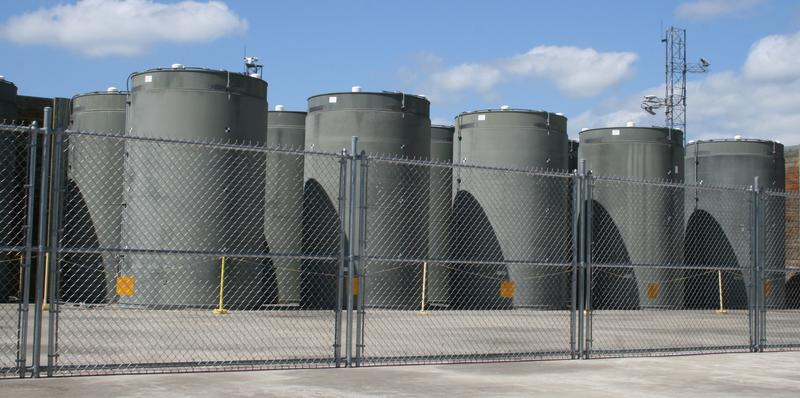Renew Nukes? Utilities Use Nuclear Energy To Help Meet Renewable Energy Goals

Spent fuel at Vermont Yankee is stored in these casks. NorthStar, the company that wants to buy the closed plant, recently boosted its financial plan to pay for fuel storage. Photo courtesy of Vermont Yankee
When you think about renewable energy, does a nuclear power plant come to mind? Probably not. But in a roundabout way, Vermont utilities are using nuclear energy to meet the state’s renewable energy standards.
If you’re a utility company in Vermont, you have to meet three types of renewable energy standards. The first two involve actual renewable energy. Think wind, solar, or hydropower, the kind where electrons come from a source that doesn’t get used up.
But the third one, called “Tier 3,” includes one key little word: “Or.” And that’s important. Tier 3 says utilities should procure new renewable energy or they can reduce fossil fuel consumption through “energy transformation projects.”
Tony Klein chaired the House committee that drafted the law in 2015. He says Tier 3 was meant to get consumers to convert from things that use fossil fuel, like cars and oil-fired furnaces, to ones that run on electricity, such as electric vehicles and cold climate heat pumps.
